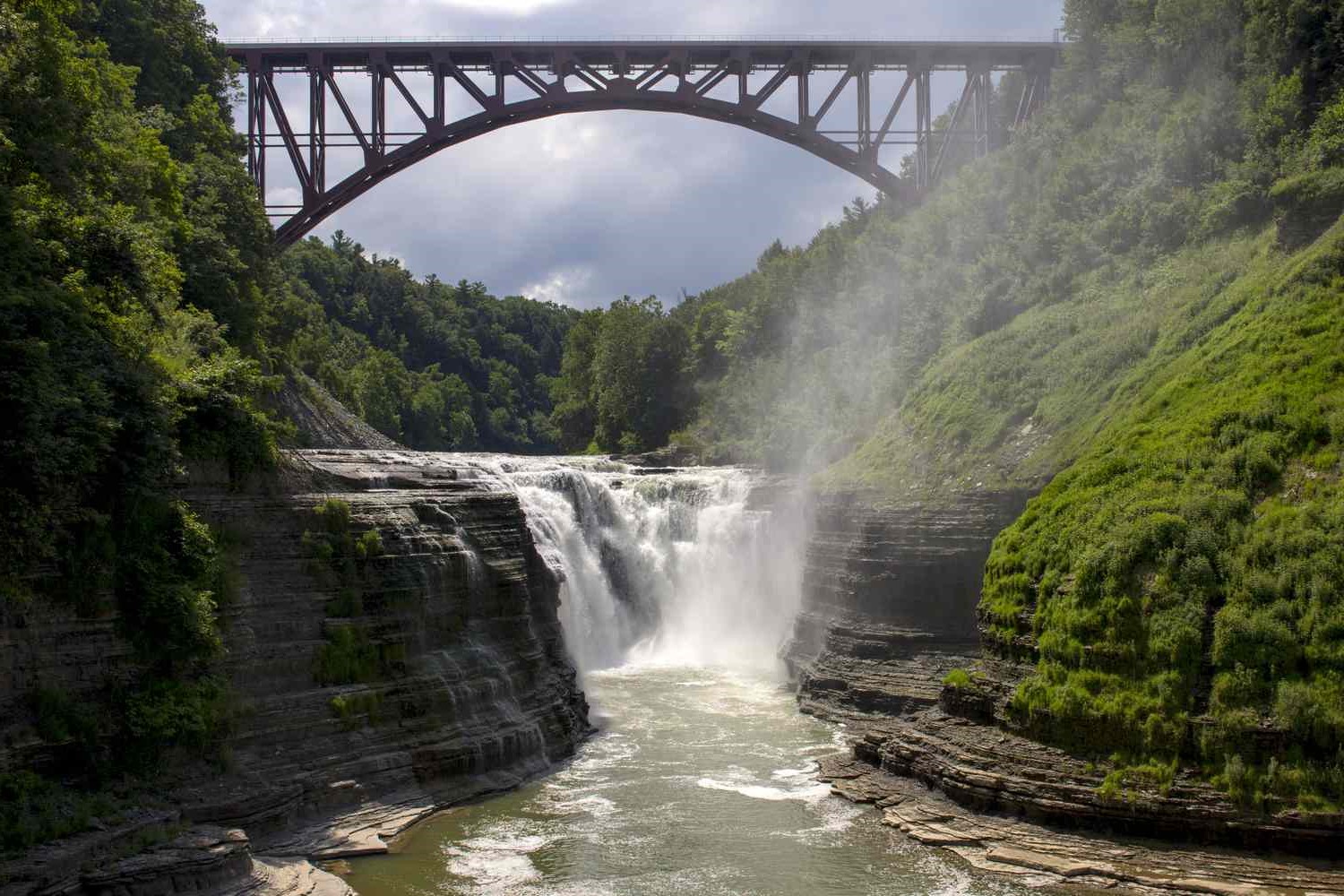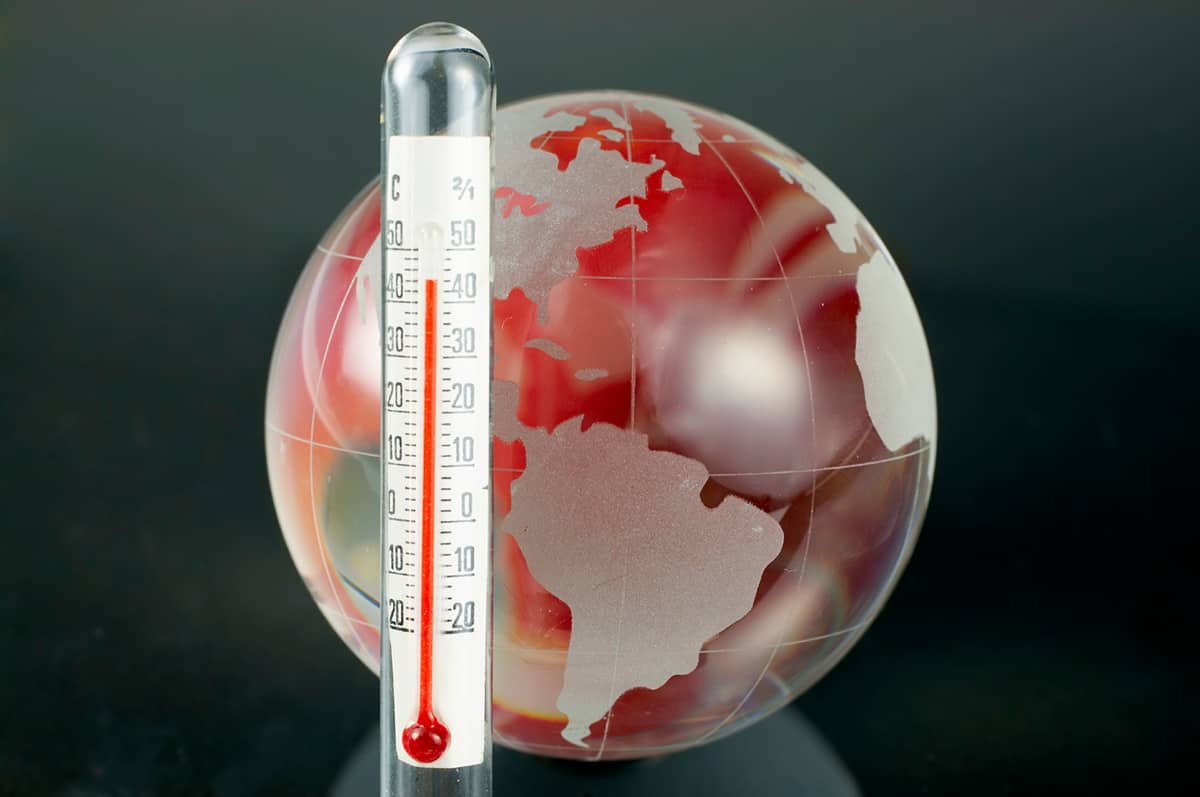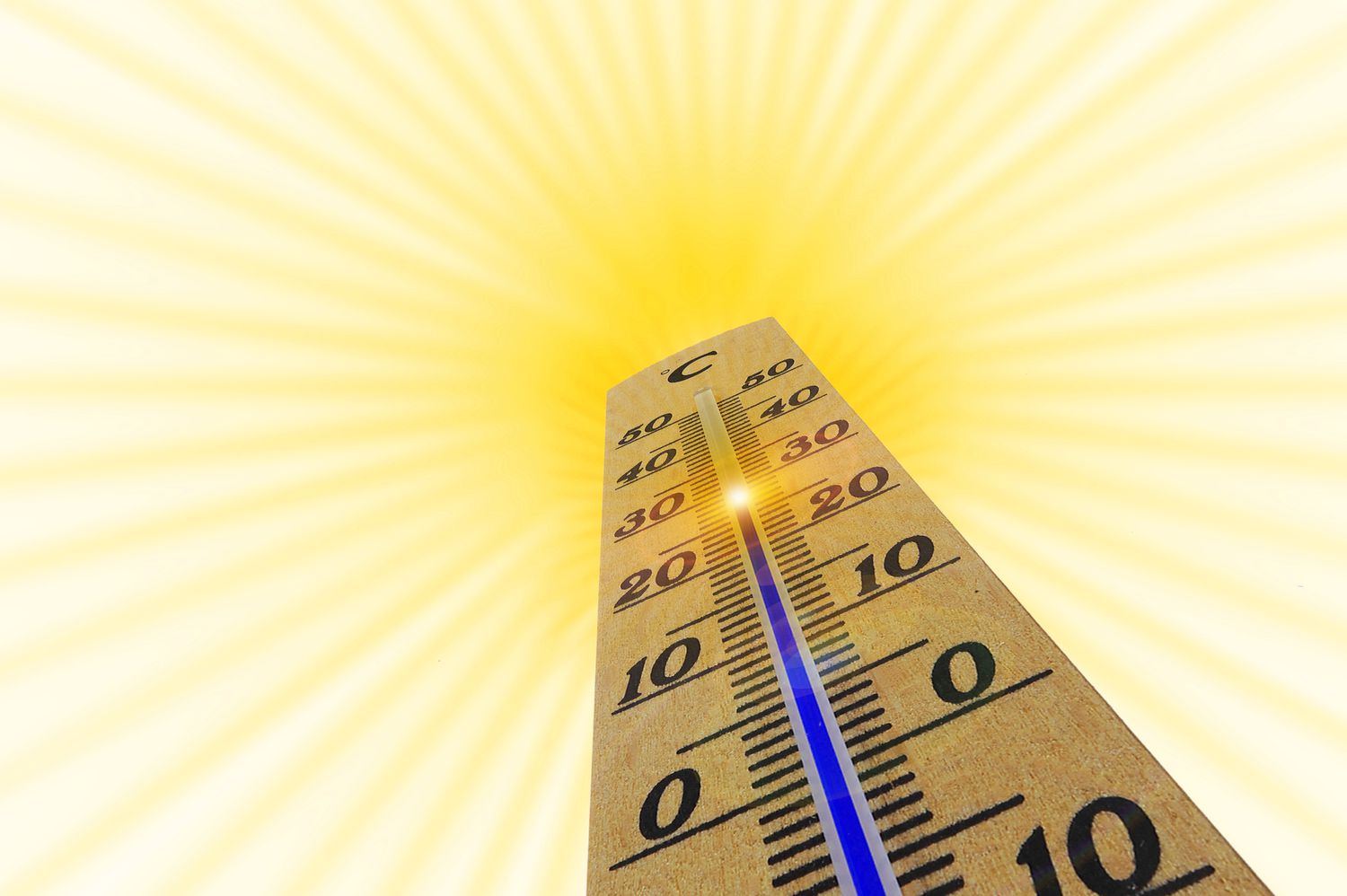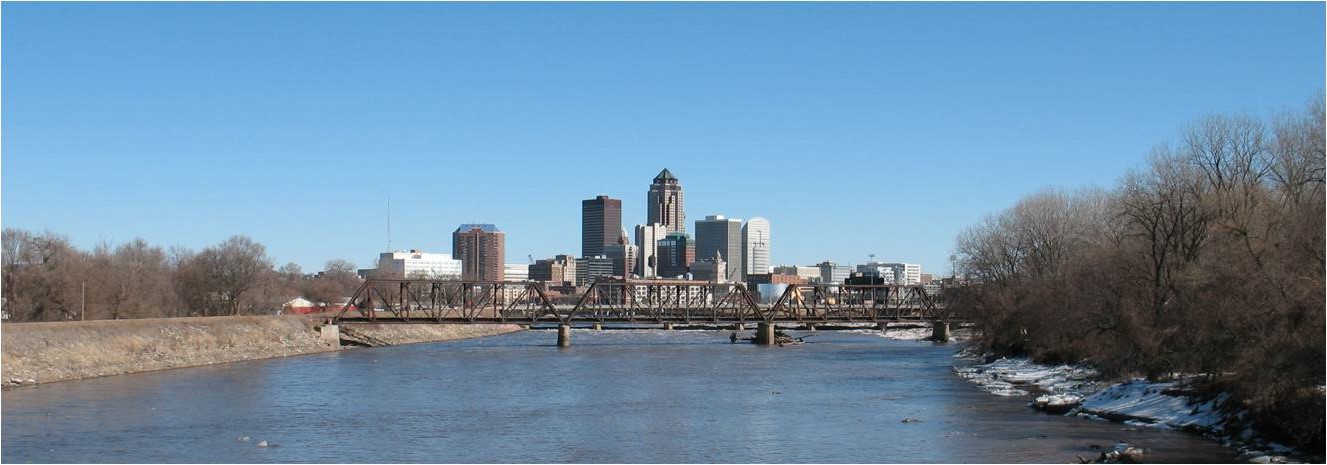Home>Weather and Climate>New York State Temperature Trends: Analyzing The Climate Patterns In New York


Weather and Climate
New York State Temperature Trends: Analyzing The Climate Patterns In New York
Published: March 6, 2024
Explore the weather and climate trends in New York State with our in-depth analysis of temperature patterns and climate changes. Understand the impact of weather on the region.
(Many of the links in this article redirect to a specific reviewed product. Your purchase of these products through affiliate links helps to generate commission for Temperatures.com, at no extra cost. Learn more)
Table of Contents
Introduction
The climate of New York State is as diverse as its landscape, encompassing everything from the bustling urban environment of New York City to the serene natural beauty of the Adirondack Mountains. Understanding the temperature trends and climate patterns in this region is crucial for comprehending the environmental dynamics that impact its residents, ecosystems, and economy.
New York State experiences a wide range of climatic conditions, from the humid continental climate in the upstate regions to the humid subtropical climate in the New York City area. These variations are influenced by a multitude of factors, including geographical location, proximity to bodies of water, and elevation differences. The state's climate is also subject to the broader trends of global climate change, which have the potential to significantly alter its weather patterns and temperature trends.
In this article, we will delve into the historical temperature data of New York State, exploring the fluctuations and long-term trends that have shaped its climate over the years. We will also examine the factors that influence the climate patterns in New York, from natural geographical features to human activities. Furthermore, we will analyze the recent temperature trends in the state, shedding light on any notable shifts or anomalies that have been observed in recent years.
By gaining a comprehensive understanding of the temperature trends and climate patterns in New York State, we can better comprehend the impacts of climate change on its environment, wildlife, and communities. This knowledge is essential for developing informed strategies to mitigate the effects of climate change and adapt to the evolving environmental conditions in the state.
Throughout this exploration, we will uncover the intricate interplay between natural phenomena and human influence, providing valuable insights into the complex tapestry of New York State's climate. Join us on this journey as we unravel the fascinating story of temperature trends and climate dynamics in the Empire State.
Read more: New York Monthly Average Temperatures Guide
Historical Temperature Data in New York State
New York State's historical temperature data provides a compelling narrative of the region's climatic evolution. Over the past century, meticulous records have been maintained, offering valuable insights into the temperature trends that have shaped the state's climate.
The historical temperature data reveals a pattern of fluctuating temperatures, with distinct seasonal variations characteristic of the region's continental climate. Winters in New York State are known for their cold temperatures, often accompanied by heavy snowfall, particularly in upstate areas. Conversely, summers bring warm to hot temperatures, creating a stark contrast to the winter chill.
The historical records also highlight notable events, such as heatwaves and cold snaps, that have left indelible marks on the state's climate history. These extreme weather phenomena serve as poignant reminders of the dynamic nature of New York's climate and its susceptibility to abrupt temperature fluctuations.
Moreover, the historical temperature data reflects the impact of global climate patterns on New York State. Long-term trends reveal gradual shifts in average temperatures, indicating the influence of broader climatic changes on the region. These trends are instrumental in understanding the interconnectedness of New York's climate with global climate dynamics.
In addition to seasonal and long-term trends, the historical temperature data captures the influence of geographical diversity on temperature variations within the state. Coastal areas experience moderated temperatures due to the influence of the Atlantic Ocean, while inland regions contend with more pronounced temperature extremes.
The meticulous documentation of historical temperature data in New York State serves as a vital resource for climate scientists, researchers, and policymakers. By analyzing this data, experts can discern patterns, identify anomalies, and make informed projections about future climate scenarios.
As we delve into the historical temperature data of New York State, we gain a profound appreciation for the intricate tapestry of its climate history. This exploration sets the stage for a deeper understanding of the factors that shape the state's climate patterns and the implications of these dynamics for its environment and inhabitants.
Factors Influencing Climate Patterns in New York
New York State's climate patterns are influenced by a myriad of factors that collectively shape its diverse and dynamic climatic conditions. These factors play a pivotal role in determining the temperature trends, precipitation levels, and overall atmospheric dynamics that characterize the state's climate. Understanding the interplay of these influential factors is essential for comprehending the intricacies of New York's climate patterns.
Geographical Features: The geographical diversity of New York State exerts a profound influence on its climate. From the expansive Great Lakes to the majestic Adirondack Mountains, the state's varied topography contributes to distinct microclimates. Coastal areas benefit from the tempering effects of the Atlantic Ocean, experiencing milder temperatures and higher humidity levels. In contrast, inland regions contend with more pronounced temperature differentials, with elevation playing a significant role in shaping local climate patterns.
Proximity to Bodies of Water: New York's proximity to bodies of water, including the Great Lakes, the Hudson River, and the Atlantic Ocean, significantly impacts its climate. Water bodies act as thermal regulators, moderating temperature extremes and influencing precipitation patterns. Coastal areas benefit from the maritime influence, experiencing more temperate conditions, while inland regions may exhibit greater temperature differentials due to the absence of this moderating effect.
Global Climate Patterns: New York State is not immune to the broader trends of global climate patterns. The state's climate is influenced by phenomena such as El Niño and La Niña, which can impact temperature and precipitation patterns. Additionally, the effects of climate change, including rising global temperatures and altered weather patterns, have implications for New York's climate dynamics. These global influences underscore the interconnectedness of New York's climate with broader climatic phenomena.
Urbanization and Human Activities: The urban environment, particularly in densely populated areas such as New York City, can create localized climate effects known as urban heat islands. The concentration of buildings, pavement, and human activities can lead to elevated temperatures, impacting local climate patterns. Furthermore, human activities, including industrial processes and transportation emissions, contribute to the accumulation of greenhouse gases, which in turn influence the state's climate through mechanisms such as the greenhouse effect.
These influential factors collectively contribute to the rich tapestry of climate patterns in New York State, shaping its weather dynamics and long-term climatic trends. By recognizing the multifaceted influences at play, we gain a deeper appreciation for the complexity of New York's climate and the need for comprehensive strategies to address the challenges posed by climate change.
Recent Temperature Trends in New York State
In recent years, New York State has witnessed notable shifts in its temperature trends, reflecting the evolving dynamics of its climate. The analysis of recent temperature data has revealed compelling patterns that offer valuable insights into the state's climatic trajectory.
One prominent trend is the observed increase in average temperatures across various regions of New York State. This upward shift aligns with the broader global phenomenon of rising temperatures attributed to climate change. Winters have exhibited milder conditions, with reduced frequency of extreme cold events, while summers have seen prolonged periods of higher temperatures. These trends underscore the impact of climate change on New York's weather patterns and the need for proactive measures to address its implications.
Furthermore, the frequency and intensity of extreme weather events have drawn attention to the changing climate dynamics in the state. Instances of intense heatwaves, heavy precipitation, and severe storms have become more prevalent, posing challenges for infrastructure, agriculture, and public health. The increasing frequency of such extreme events underscores the urgency of adapting to a climate that is exhibiting heightened variability and unpredictability.
Coastal areas, including New York City, have experienced the effects of sea level rise and coastal flooding, which are intrinsically linked to temperature trends and climate change. The warming of ocean waters and the melting of polar ice contribute to these phenomena, necessitating comprehensive strategies to mitigate the impacts on coastal communities and ecosystems.
Moreover, the interplay between temperature trends and ecological systems has become increasingly evident. Shifts in temperature patterns influence the timing of natural phenomena, such as plant flowering, animal migrations, and insect activity. These ecological responses to changing temperatures have implications for biodiversity, ecosystem dynamics, and agricultural practices, highlighting the interconnectedness of climate trends with the natural world.
As New York State navigates the complexities of evolving temperature trends, the imperative to prioritize sustainable practices, resilience-building measures, and climate-conscious policies becomes increasingly pronounced. By acknowledging and responding to the recent temperature trends, the state can proactively address the challenges posed by a changing climate, safeguarding its environment, communities, and economic vitality.
The analysis of recent temperature trends in New York State serves as a call to action, emphasizing the need for collaborative efforts to mitigate the impacts of climate change and foster a more sustainable and resilient future for the state and its inhabitants.
Impacts of Climate Change on New York's Environment
The impacts of climate change on New York's environment are multifaceted and far-reaching, encompassing a spectrum of ecological, hydrological, and atmospheric transformations. As the state grapples with the repercussions of a changing climate, the environmental landscape undergoes profound shifts that necessitate a comprehensive understanding of the challenges at hand.
One of the most discernible impacts of climate change on New York's environment is the alteration of ecosystems and biodiversity. Rising temperatures, shifting precipitation patterns, and extreme weather events exert pressure on native flora and fauna, disrupting ecological balances and habitats. Species distribution and phenological patterns are being influenced, potentially leading to mismatches in ecological interactions and impacting the resilience of ecosystems.
The state's iconic landscapes, including the Adirondack Mountains and the Hudson River Valley, face the implications of climate change, from altered forest composition to changes in water availability. These environmental transformations have implications for outdoor recreation, wildlife conservation, and the preservation of natural heritage, underscoring the need for adaptive management strategies and conservation efforts.
Furthermore, the hydrological dynamics of New York's environment are undergoing notable changes due to climate change. Sea level rise, coastal erosion, and increased frequency of intense precipitation events pose challenges for coastal communities and infrastructure. The vulnerability of low-lying areas, including parts of New York City, to flooding and storm surges underscores the urgency of implementing resilient coastal management practices and infrastructure enhancements.
Inland regions are not immune to the hydrological impacts of climate change, as altered precipitation patterns and the intensification of droughts can influence water resources, agricultural productivity, and freshwater ecosystems. The delicate balance of water availability and demand necessitates proactive water management strategies to mitigate the effects of a changing hydrological landscape.
The atmospheric impacts of climate change manifest in the form of air quality concerns, including heightened levels of ground-level ozone and particulate matter. These environmental stressors have implications for public health, particularly in urban areas, necessitating measures to reduce emissions and enhance air quality monitoring and management.
As New York confronts the multifaceted impacts of climate change on its environment, the imperative to prioritize adaptation, mitigation, and resilience-building measures becomes increasingly pronounced. Collaborative efforts to address the environmental challenges posed by climate change are essential for safeguarding the state's natural resources, ecological integrity, and the well-being of its inhabitants.
The recognition of the far-reaching impacts of climate change on New York's environment underscores the urgency of proactive and coordinated responses to mitigate the effects and foster a more sustainable and resilient environmental future for the state.
Read more: How’s the Weather in New York in May?
Conclusion
The intricate tapestry of temperature trends and climate patterns in New York State unveils a compelling narrative of environmental dynamics, human influence, and the far-reaching impacts of climate change. From the historical temperature data that reflects the ebb and flow of seasonal variations to the recent trends that signal the imprint of global climate change, New York's climate history is a testament to the interconnectedness of natural phenomena and human activities.
The factors influencing climate patterns in New York, from geographical features to global climate dynamics, underscore the complexity of the state's climatic conditions. The interplay of these influential factors shapes the diverse microclimates and weather dynamics that define New York's environmental landscape. Recognizing the multifaceted influences at play provides a deeper appreciation for the challenges and opportunities inherent in addressing climate change and fostering climate resilience.
The recent temperature trends in New York State serve as a clarion call, emphasizing the urgency of proactive measures to mitigate the impacts of climate change. From the observed increase in average temperatures to the intensification of extreme weather events, the evolving climate dynamics necessitate comprehensive strategies to adapt, mitigate, and foster resilience. By acknowledging and responding to these trends, the state can chart a course toward a more sustainable and climate-resilient future, safeguarding its environment, communities, and economic vitality.
The impacts of climate change on New York's environment underscore the imperative of collaborative efforts to address the multifaceted environmental challenges. From the ecological disruptions to the hydrological transformations and atmospheric stressors, the environmental landscape is undergoing profound shifts that demand adaptive management, conservation, and resilience-building measures. By prioritizing sustainable practices, conservation efforts, and climate-conscious policies, New York can navigate the complexities of a changing climate and safeguard its natural resources for future generations.
In conclusion, the exploration of temperature trends and climate patterns in New York State illuminates the intricate interplay of natural and anthropogenic forces that shape its environmental dynamics. By embracing a holistic approach to climate resilience, New York can forge a path toward a sustainable and vibrant future, where the rich tapestry of its climate history continues to inspire stewardship, innovation, and collective action in the face of a changing climate.














